Essex Designed AP Racing 2-piece Competition J Hook disc pair for rear C7 Z51 and Base Stingray Corvette
- 13.31″ x 1.02″ (338mm x 26mm) 72 Vane, D47 radial depth
- Huge increase in airflow, cooling capacity, and durability vs. OEM discs
- Same dimensions as OEM rear discs, works with stock calipers no other modifications required
- Designed for: club racing, time trial, autocross, HPDE
- 3 lbs. unsprung weight savings per side
- Ultralight, fully floating, anodized billet aluminum hat with float control/anti-rattle clips
- Huge increase in airflow, cooling capacity, and durability vs. OEM discs
Advantages Over OEM Brake System
Our Essex Designed J Hook Competition Brake Discs offers our customers the following advantages over the OEM Z51 rear discs:
- Championship winning, 72 vane, fully-floating, AP Racing J Hook design
- Huge increase in airflow, cooling capacity, and durability vs. OEM discs
- 3 lbs. unsprung weight savings per side
- Disc metallurgy specifically designed to handle the temps typically seen on track offer a long service life
- Replacement iron disc rings available at an extremely competitive replacement price ($329 each)
- Anti-knockback/anti-rattle disc attachment hardware
- Available disc burnishing service ensures that your kit arrives ready to be installed and driven hard immediately
For a more complete analysis of the OEM C7 brakes, please read “Stingray Brake Analysis…Are they Track Worthy?” on our blog.
Compared to previous generations of Corvettes, GM definitely took a step forward with the brake design on the C7 Stingray platform. That said, the brake components were still designed primarily with road manners in mind. As you’ll see below, there is a considerable amount of room for improvement if you plan to run your car hard on the racetrack.
The OEM Stingray Z51 discs have a few major impediments that prevent them from working optimally on a racetrack:
- Pillar internal vane design
- Narrow/partially obstructed air gap
- Limited airflow to outer disc face
- Dual-cast construction
- Relatively low thermal mass given the platform’s performance potential
A proper racing disc design differs considerably from the OEM Z51 disc design, and will operate with far more efficiency in a racetrack environment. Despite having the same overall dimensions as the OEM Z51 discs, AP Racing’s Heavy Duty J Hook Discs provide superior cooling, less judder, fewer cracks, and an increased service life vs. OEM and competing discs of comparable size. AP Racing J Hook discs are the epitome of endurance racing components, and have been proven time and again in professional racing, winning many races and championships (ALMS, Rolex, Grand Am, etc.). They will certainly stand up to any abuse that you throw at them.
Internal Vane Design
One of the biggest problems with the Stingray Z51 front discs is that they are a pillar vane design, just like the discs on the C7 base model. Pillar vanes are used to promote disc face stability and low NVH. If you were able to see through the disc face, you’d see that the pillar array has many points of contact with the back sides of both disc faces. Such an arrangement reduces distortion of the disc face, prevents hot and cool spots, and ensures consistent pad transfer to the disc face when heated. That means less chance of judder, vibration, noise, and…warranty claims! The major downside to pillar vanes is that they do not promote optimal airflow through the disc. They’re non-directional, which means they aren’t optimized for airflow on both sides of the car. They won’t draw much air through them, even if air is force-fed directly into them via a duct system. As such, they will always tend to run hot when subjected to heavy track use.
The internal vane design on AP Racing discs is considerably different from the OEM C7 Z51 discs. After extensive CFD and thermal stress analysis, AP designed their Heavy Duty J Hook discs with 72 curved vanes to increase airspeed and heat transfer, while reducing deflection and remaining reasonably lightweight. The increased directional vane count on the J Hook Heavy Duty Disc amplifies air speed through the disc, reduces air re-circulation between vents, and also increases convective heat transfer and heat distribution. In other words, both air and heat move more quickly and evenly through the disc, creating increased stability under the extreme loads of racetrack use. The high 72 vane count has similar benefits to a pillar vane design, and is far more stable than competitors’ 48 vane designs. The distance between each of the 72 vanes is fairly small, which makes the disc less prone to coning, distortion, and cracking, while providing less brake fade, even pad transfer, reduced judder and vibration, and a longer service life. You receive similar benefits to the OEM pillar vane design, but with far greater airflow and cooling capacity.
Below are the AP Racing on, and the OEM Z51 front disc on the right.
- Notice the shape and number of vanes. The AP Racing disc uses 72 directional curved vanes, which optimize airflow on each side of the car. The disc acts like an impeller, pumping cooling air through the disc vanes, and forcing hot air out. The OEM disc has far fewer vanes that are non-directional, and not optimized for either side of the car. They create turbulent air and do not promote airflow through the disc.
- Look at the huge difference in the width of the air gap. The entire width of the air gap is exposed on the back side of the AP Racing disc, which allows cooling air to enter. The OEM disc has a much narrower gap, and it is partially obstructed by the attachment arms of the dual-cast hat.
- Also notice the large openings between the mounting points on the AP Racing disc. These openings allow air to flow into the back side of the hat and across the outer face of the disc. Airflow to the outer disc face is completely blocked on the OEM units, and at consistently elevated temperatures, an imbalance of that sort can lead to deformation and cracking.


AP Racing J Hook Discs are the epitome of endurance racing components. They will hold up extremely well to any abuse you plan to throw at them. These discs have been proven time and again in professional racing, winning many races and championships (ALMS, Rolex, Grand Am, etc.).
Two-piece Floating Design with Aluminum Hat
As is the case with most metal, iron brake discs grow substantially when heated. As it is heated, a disc expands radially, increasing in diameter and circumference. One-piece disc designs run into problems when this occurs. Look at the picture below and imagine the disc is being heated on the track. As the disc expands, the outer edges of the disc are pulling away from the center of the disc, but there are no built-in provisions to allow for that expansion. The edges of the disc therefore pull, lift, and distort, which is called coning. Now imagine that disc vertical on the car, running in your caliper. Coning directly impacts the brake pads’ contact with the disc, leading to uneven wear and tapering, and even a long brake pedal.
Two-piece discs on the other hand, compensate for the expansion of the disc as it heats. This is accomplished by building ‘float’ into either the disc itself, or the disc hat/bell. In this case, the float is in the disc. If you look closely at the picture below, you can see that the mounting holes for the hat attachment bobbins are not round. They are an oblong shape. These channels allow the hat mounting hardware to slide as the disc is heated and expands, allowing the disc to run true in the caliper without distortion. That means less distortion, stress cracks, and pad taper.
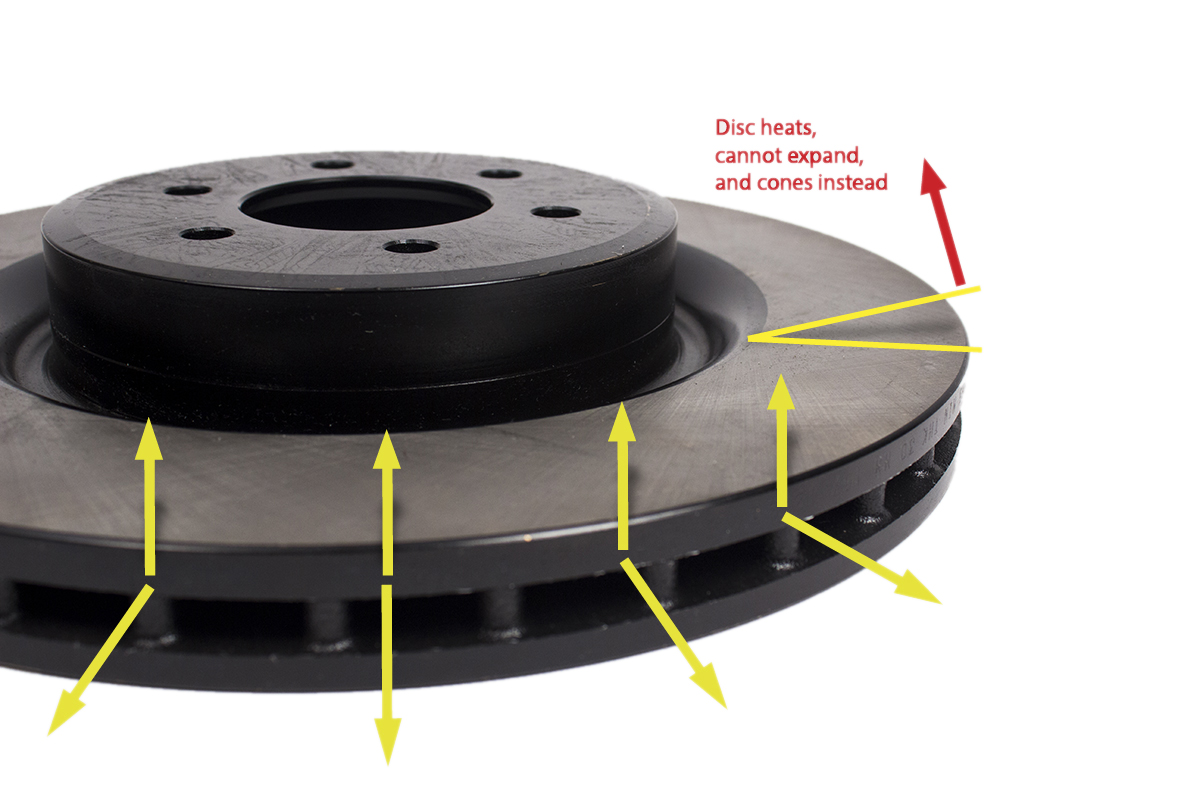
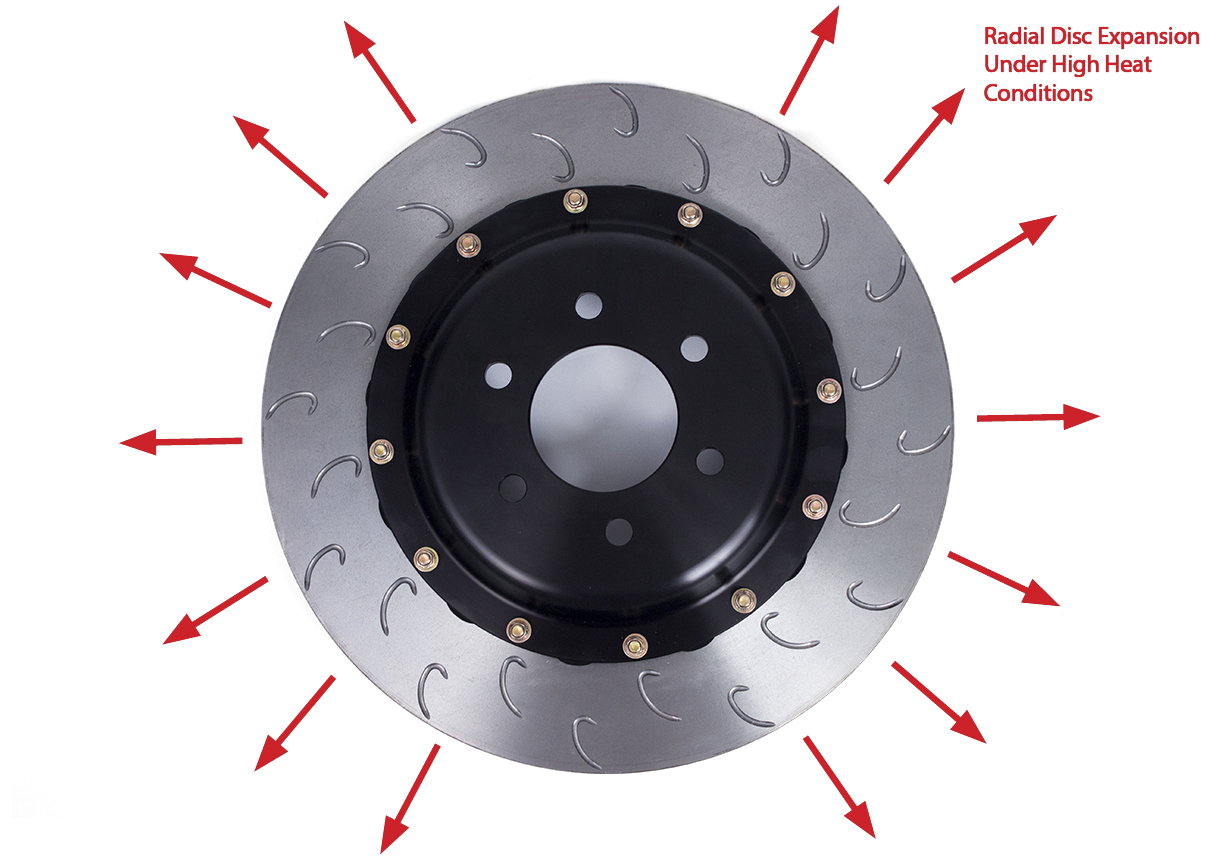
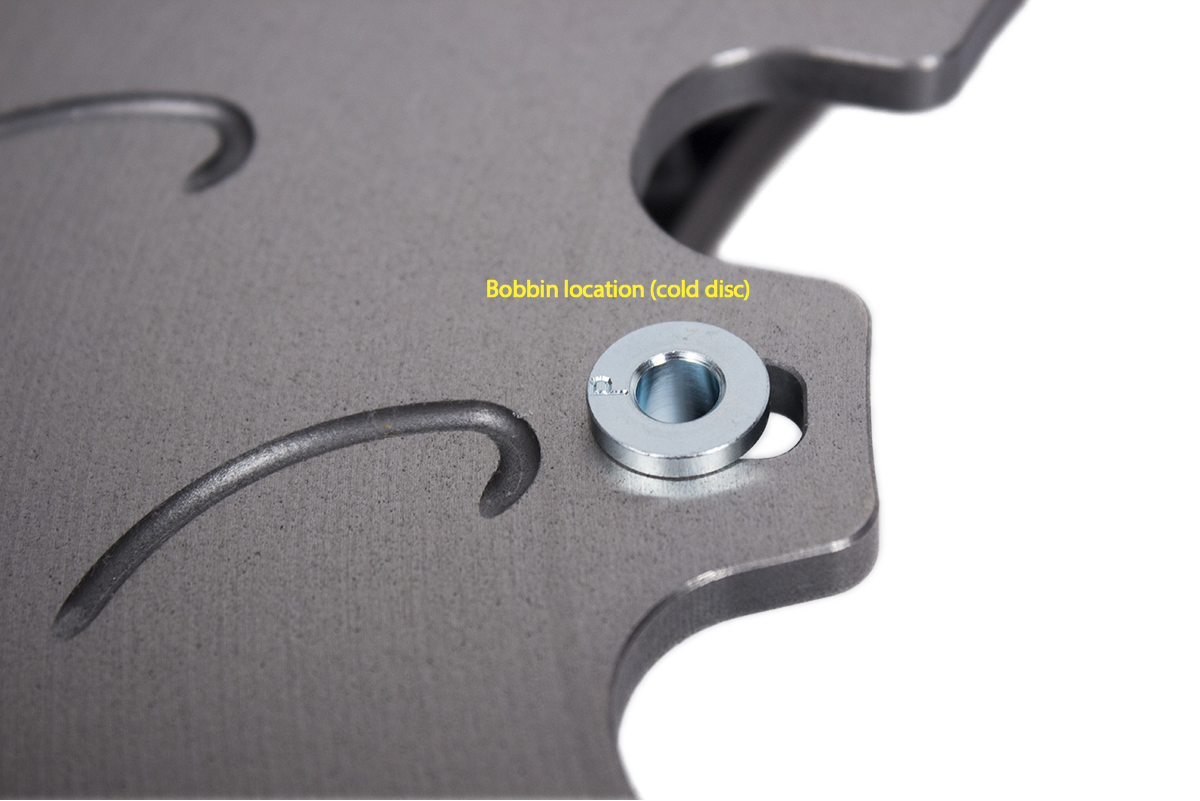
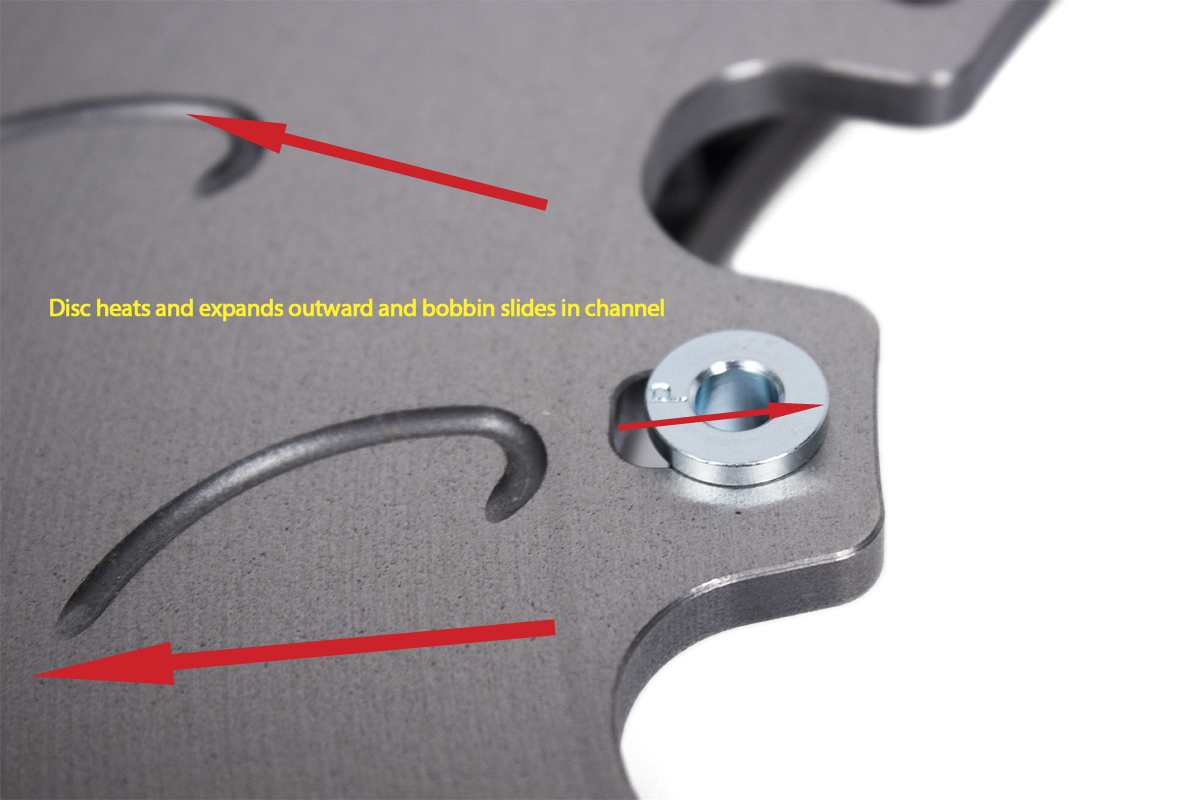
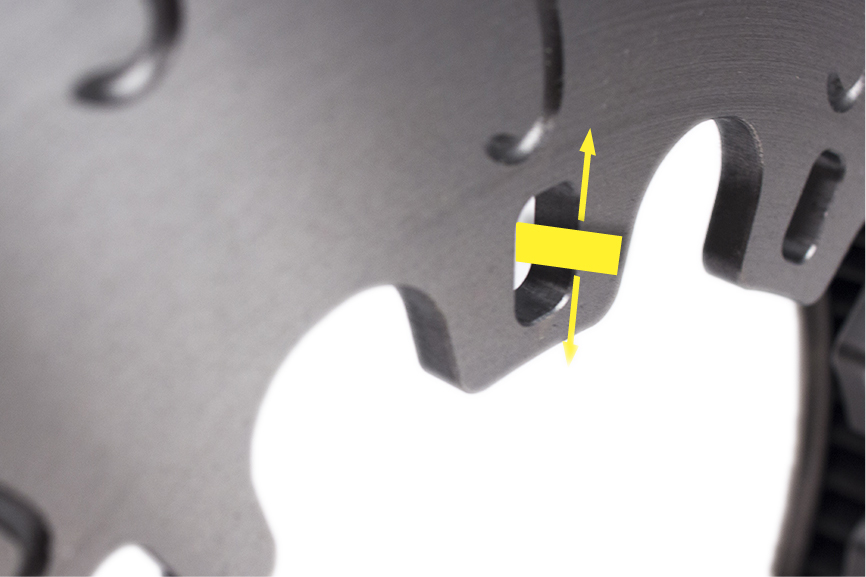
Mounting Hardware and Anti-Knockback Spring Clips
If you look closely at the mounting hardware we use on our Competition Discs, you’ll notice a few details that are often overlooked in lesser products. These components are specially made for their intended purpose. These are not cheap bolts found at your local big box store. They are custom made in the USA for Essex and AP Racing, and they are the exact same components we use on professional racing products.
In order to help control the lateral motion of the disc, which pushes the pistons back into the caliper, we use an anti-knockback spring clip on every other disc attachment point (on a ten bolt disc there are five spring clips, while on a twelve bolt disc there are six). These spring clips help keep the disc hat and iron ring in alignment, while still allowing the disc to expand and float radially. As an added bonus, they prevent the hat and iron disc from rattling and making noise.
Edit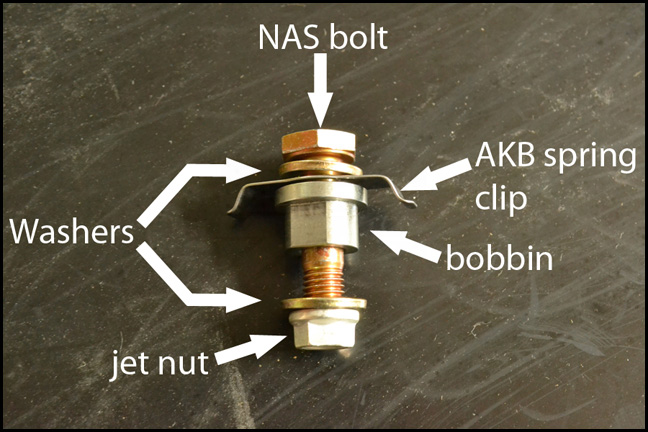
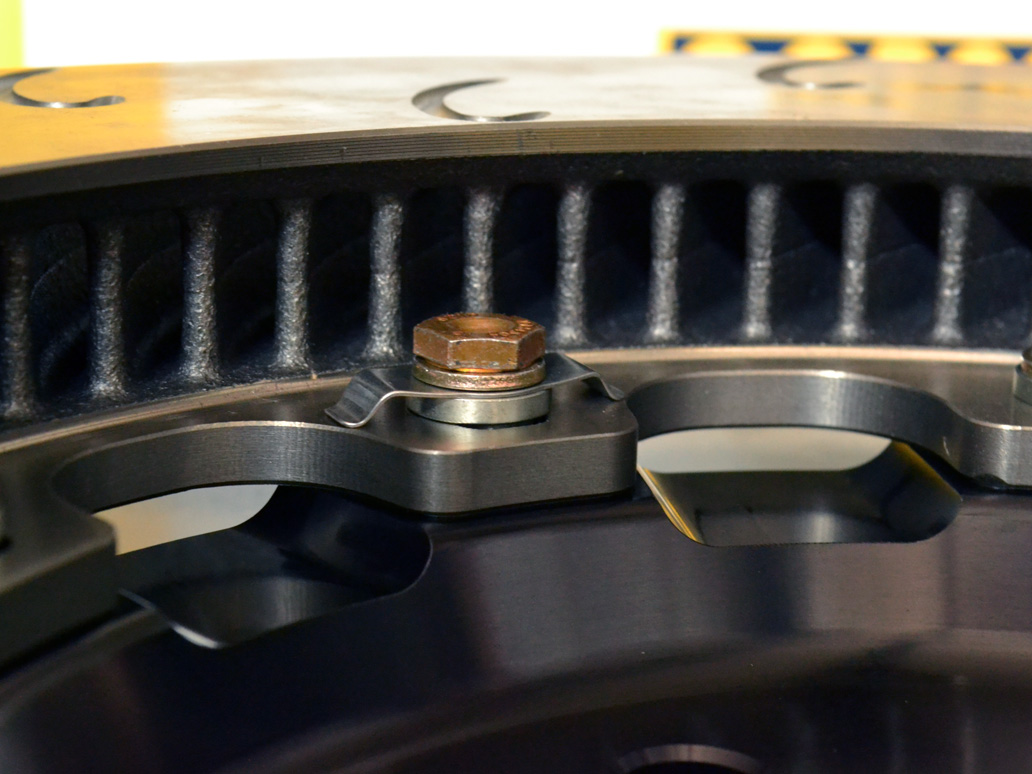
Hat Design
Floating two-piece discs also have the added benefit of reducing heat conduction to the hubs and bearings, decreasing wear and tear on these costly components. The disc hats themselves are manufactured from 6061 heat-treated billet aluminum, with a hard anodized coating. This material was specifically chosen for its strength at high temperatures, as it will be in direct contact with the searing hot iron discs. The hats feature scallops on the underside, to allow for heat evacuation along the outer disc face once installed.
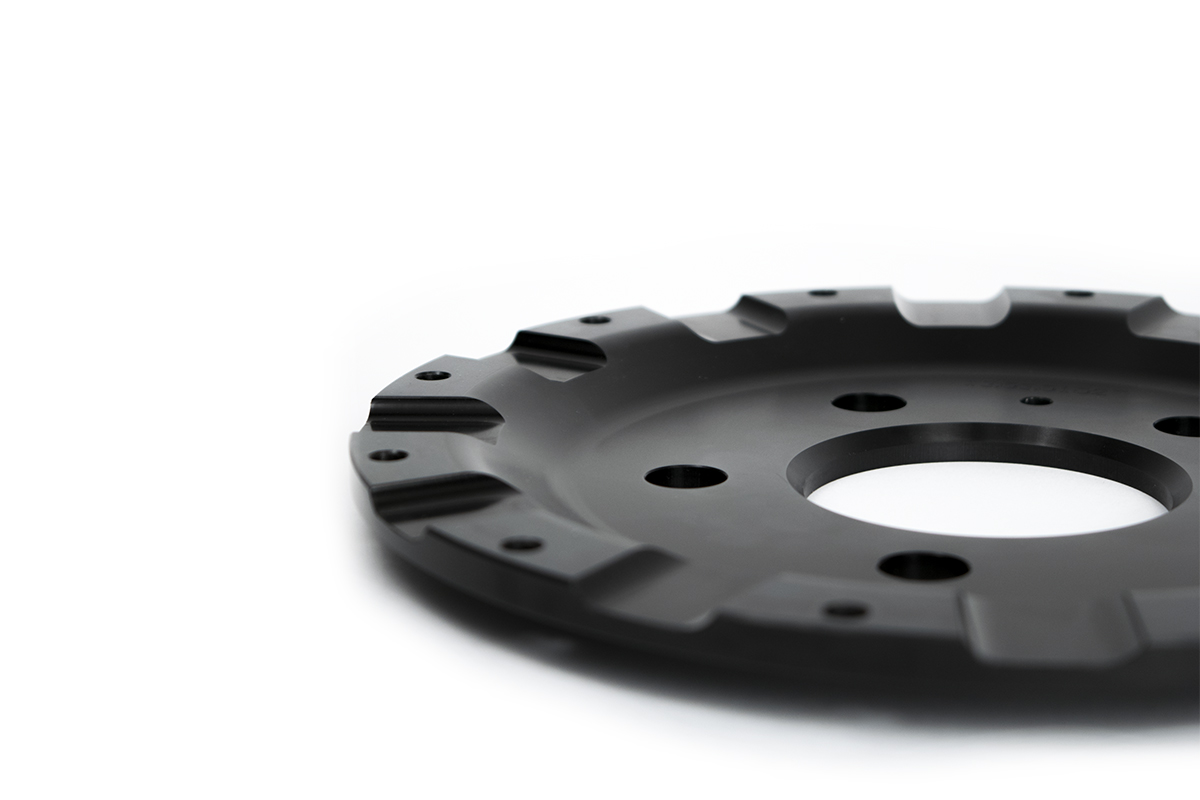
Internal Vane Quantity and Quality
The internal vane design on AP J Hook Discs is quite a bit different vs. OEM-style discs and other brands of aftermarket discs. Many OEM discs feature a pillar vane design, which can be thought of as a group of posts or pillars connecting the two disc halves together (see pic below). The pillars are not organized linearly from the outside to the inside of the disc, and turbulence is created as air flows through and among them. Pillar vane discs are therefore not particularly well suited to heat evacuation. The goals of a pillar vane design are disc face stability for low NVH (noise, vibration, harshness), and a low cost of production. Pillar vanes are non-directional, and the same part number is used on both sides of the car (again for cost reduction). Other OEM discs feature a straight, non-directional internal vane. While that type of vane flows more air than a pillar, it does not move nearly as much air as the directional vanes featured in AP Racing’s discs. Having directional vanes means that AP Racing discs are handed. There is a unique left disc and a right disc in each pair, and they cannot be swapped from side-to-side on the car. The orientation of the vanes is optimized to spin in a certain direction, pumping the maximum amount of air possible through the disc. The shape of these internal vanes is also optimized to promote smooth airflow.
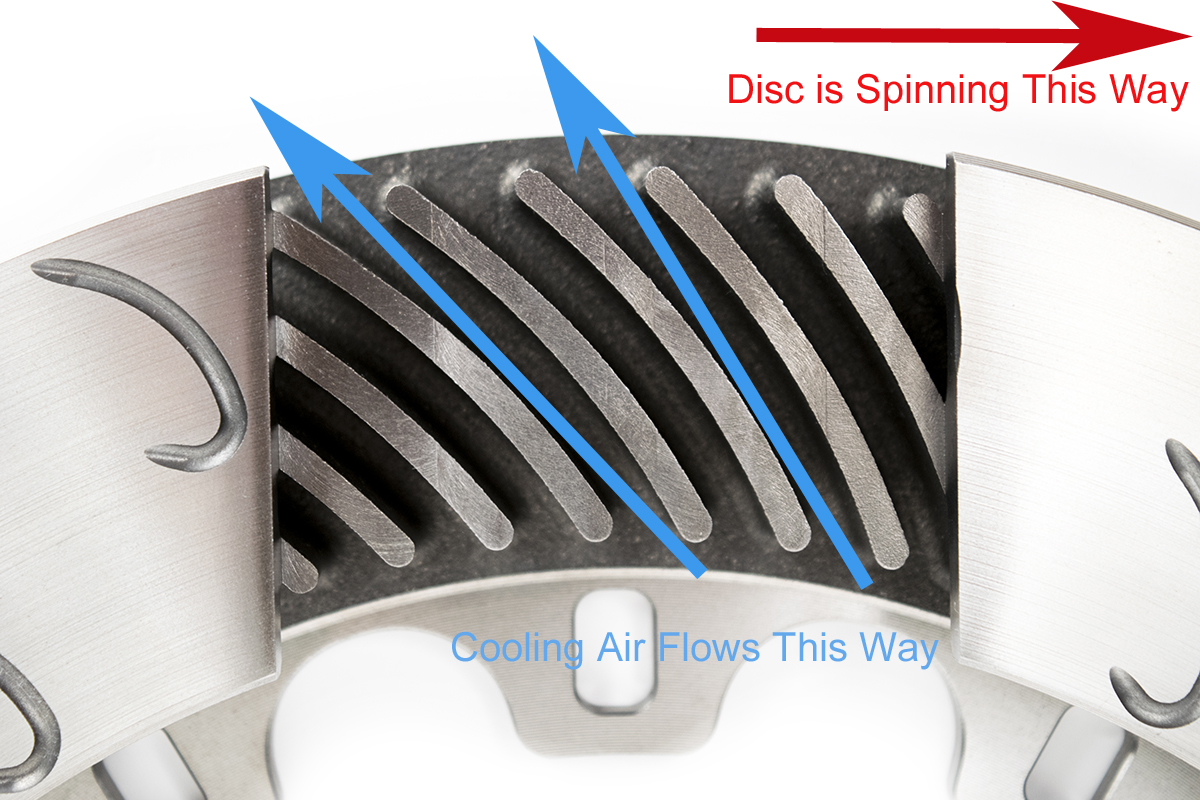
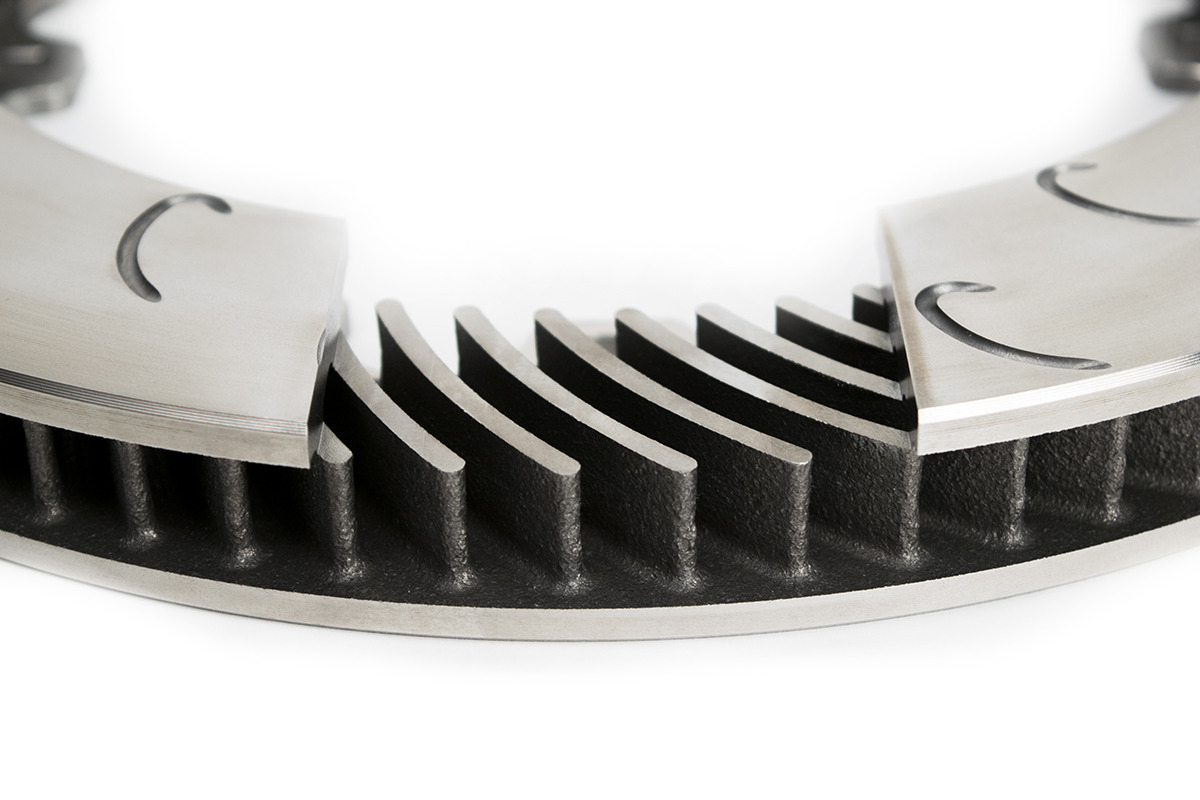
In addition to having a superior internal vane design, AP Racing discs have far more of them! Most aftermarket discs have 30 to 48 vanes. After extensive CFD and thermal stress analysis, AP designed the Competition J Hook’s with a high vane count (typically 60 to 84 depending on application). Having more vanes increases airspeed and heat transfer through the disc, reduces air recirculation between vanes, and reduces deflection at the disc face. Compared to an OEM-style disc or competitor’s 48 vane discs, the 60+ vane discs are less prone to coning, distortion, and cracking, while providing less brake fade, reduced judder, more even pad contact, and a longer service life.
Below is a comparison of a one-piece OEM pillar vane disc and an AP Racing two-piece J Hook. A few things to note in these pictures: The AP Racing disc has a much wider air gap between the disc faces, allowing considerably more airflow into and through the disc. The uniform, directional vane design also contributes heavily to superior airflow.
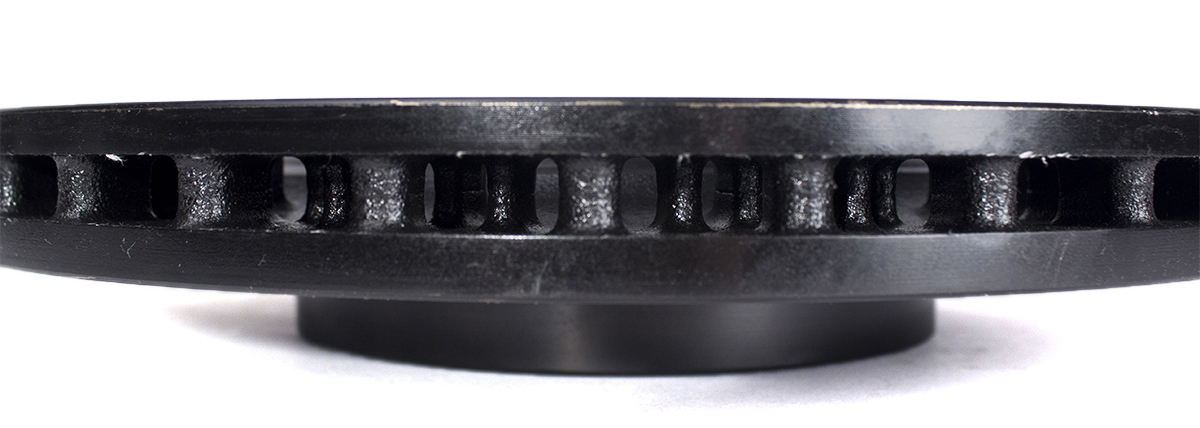

Most of the cooling air that enters a brake disc comes from the back side of the discs, particularly if brake ducts are being employed. The top disc is an OEM pillar vane. The second disc is an OEM dual-cast disc (which is technically a two-piece disc). The bottom disc is the AP Racing J Hook. Which of these discs do you think will flow the most air? While the OEM discs have narrow inlet port and/or obstructions blocking the disc vanes, the AP Racing disc offers a clear path for cooling air to enter and flow through the disc. The result is significantly cooler discs that are less prone to cracking and wear.



Exclusive AP Racing J Hook Slot Pattern
When you cut a slot or drill a hole in a disc you impact heat transfer. The area around the slot or hole acts as a cool spot when the disc heats up, which is not ideal. Ideally, heat is distributed uniformly around the disc so it can be hit with the cooling air that is pumping through the disc, radiate outwards away from the disc, etc. Cool spots create stress risers and increase the likelihood of the disc cracking. They also cause the face of the disc to distort unevenly, leading to uneven pad deposits, vibration, and judder.
The OEM discs avoid this problem by simply leaving the face blank. While the risk for NVH goes down, so does the pad bite and feel of the disc through the brake pedal. Competitive aftermarket offerings typically have straight slots, which tend to leave cool spots across the disc face between the slots.
During exhaustive R&D testing, AP’s J Hook design was found to create a constant pathway of evenly distorted material on the face of the disc. The hooks are spaced out as evenly as possible both around the circumference of the disc, as well as from the inside edge (where the hat attaches) to outer edge, with a slight overlap to promote even heat distribution/distortion. In addition to reducing cracking, the even heating of the disc also helps provide an even transfer layer of pad material on the disc when you bed them in.
Additionally, the J Hook slot pattern produces a greater number of leading edges for the pads to bite into vs. a traditional curved slot pattern, and particularly a plain-faced disc. While this may lead to slightly more whirring or scraping noises from the discs when applying the brakes, the benefits of more even heat distribution, less propensity to crack, cleaner pad material transfer during bed-in, and more bite far outweigh the slight increase in NVH for the serious enthusiast.
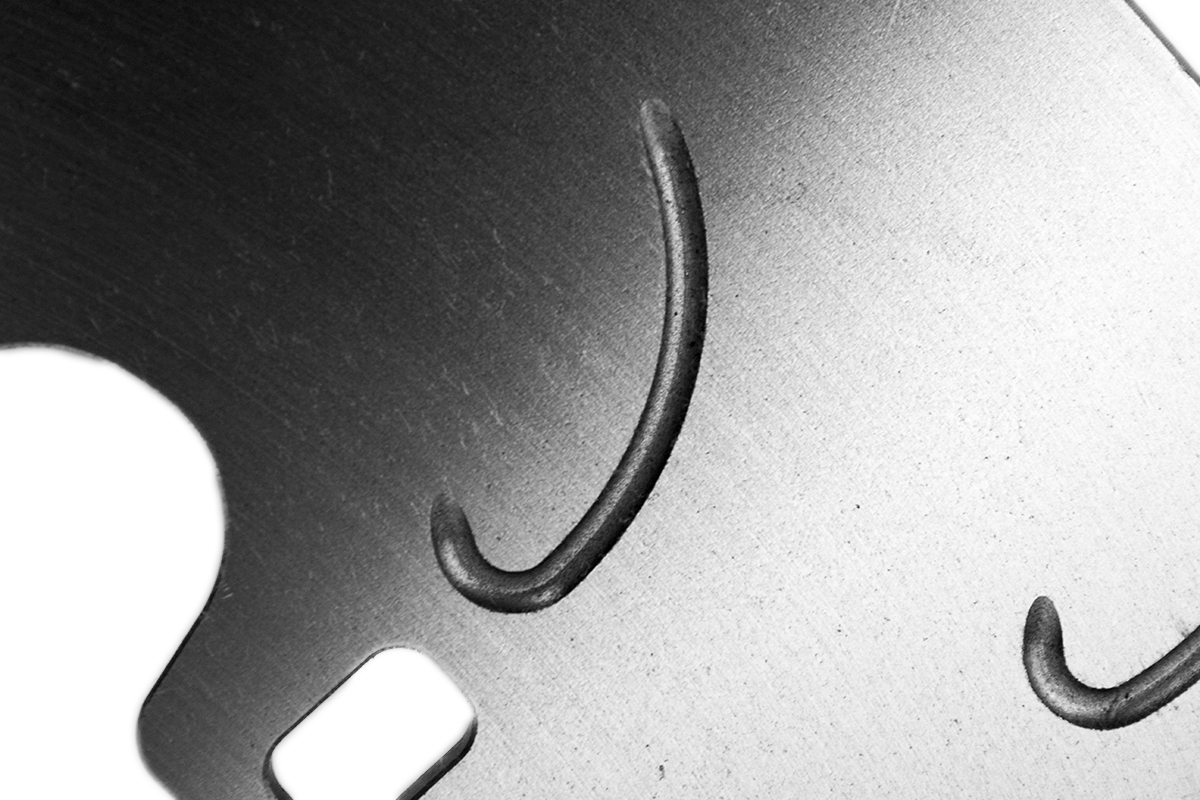
Feature: Complex Metallurgy Developed Through 50+ Years of Experience
AP Racing has been designing brake components for more than 50 years. They’ve had their components on cars that have won more than 750 Formula 1 races! On any given race weekend, AP J Hook discs can be found on 75% or more of the NASCAR Sprint Cup grid. AP has learned from these experiences, and have developed a proprietary iron alloy with extreme durability, designed specifically for what you intend to do with it (flog the hell out of it). The primary objectives with OEM discs are simple: they must be cheap and easy to produce. The design objectives for these two products are vastly different.
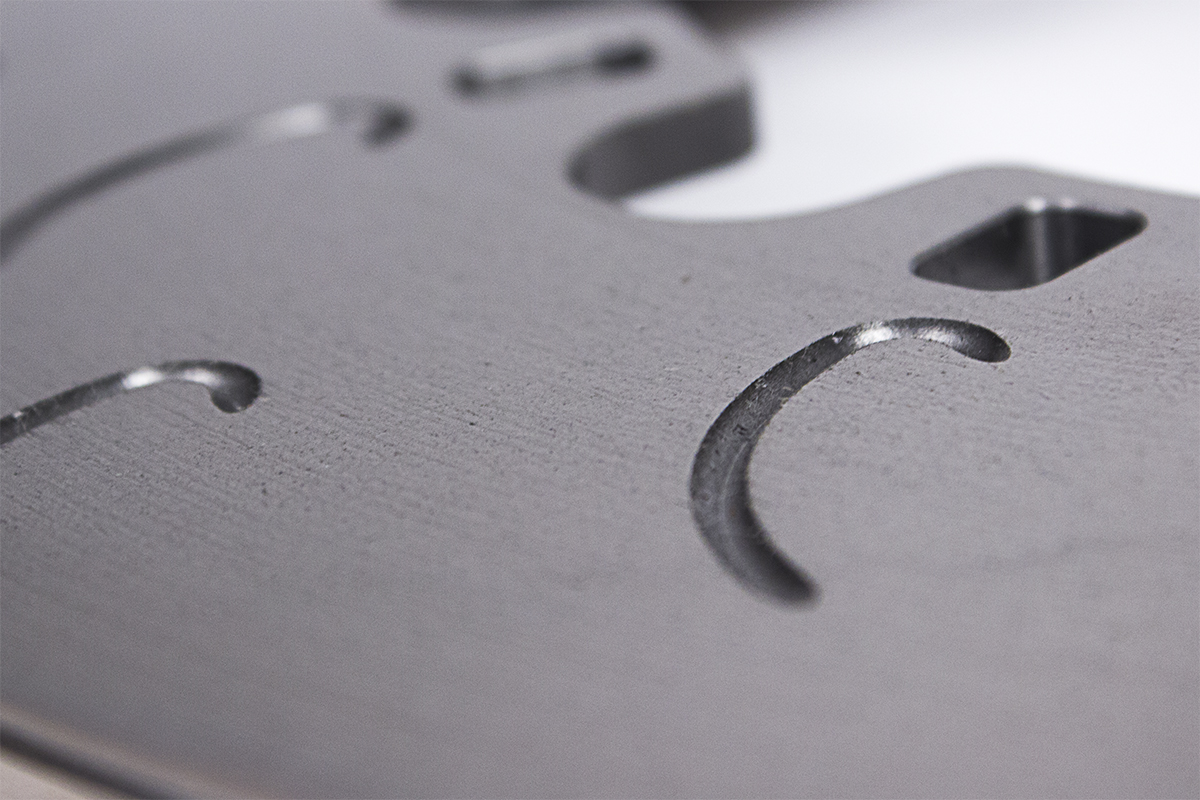
Disc Burnishing/Bedding Service
If your brake discs aren’t being properly prepared for abuse prior to flogging them on track, you’re exposing yourself to potential judder, vibration, and cracking issues. We all know that prepping your pads and discs at the track can be difficult. Doing so wastes time during the first session of the day, and it’s a hassle and potentially dangerous for other drivers as you go through the procedure. Track time is expensive and tough to come by. The more time you spend behind the wheel performing an elaborate bed-in procedure, the less time you’ll spend doing hot laps. Performing the procedure on-track also limits its repeatability. You can’t control what’s going on around you with track conditions, other drivers, etc., and many track configurations don’t really lend themselves to the constant start/stop/start required to do the job properly.
Essex is now offering a solution via our professional burnishing service. Previously reserved for our professional racing customers, we are now offering our retail customers the option of having the discs in select Competition Brake Kits pre-burnished at our factory. We burnish thousands of discs for the top racing teams each year. After countless hours of experimentation, and extensive feedback from the top drivers and teams, we can consistently squeeze the most reliable performance out of AP Racing’s discs. The procedure is incredibly repeatable, as it is performed on a computer-controlled machine by experienced technicians.
The cost of our burnishing service is only $50 per disc, making it an affordable, time-saving option that will produce far more consistent and safer results than trying the procedure on your own.
Watch a brief video of our disc burnishing service here.
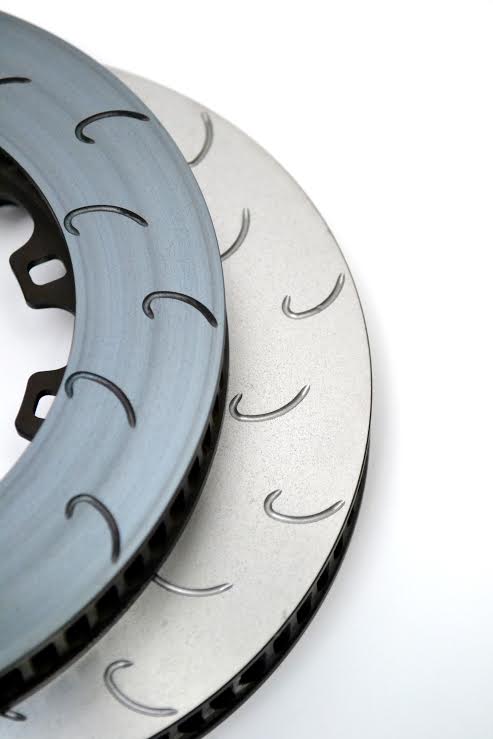
Reasonable Replacement Cost
Let’s face it, no matter how good a brake disc is, it’s still a consumable item. They’re no different than brake pads or gasoline. You beat them up until they crack to pieces, then you throw them away. If replacement iron is too expensive, you’re always driving in fear, waiting to shell out big bucks for a new set. Despite having the most expansive set of features on the market, our replacement iron rings are completely affordable.
Going to the track is expensive! Event entrance fees, hotels, fuel, and tires all add up. While you obviously want the best product available, you can’t afford to pay a small fortune for something you’re just going to destroy. You can buy a cheap set of $150 discs for every event, have relentless heat issues, and find yourself constantly swapping them out. When you do the math, the long-term value of the AP J Hook’s is tough to beat. You’ll enjoy all the benefits without breaking the bank, and you’ll spend more time driving and less time wrenching.
Elite level teams choose AP Racing discs because they know the work has been done to provide the best available product at any price level. The AP J Hook is a direct derivative of AP’s vast racing experience. You can buy with confidence knowing that you’re getting the best product available at any price point. A note of caution however: the J Hook design is often imitated, and there are a number of lesser quality imitations on market. Before purchasing, make sure you are getting an authentic AP Racing J Hook.
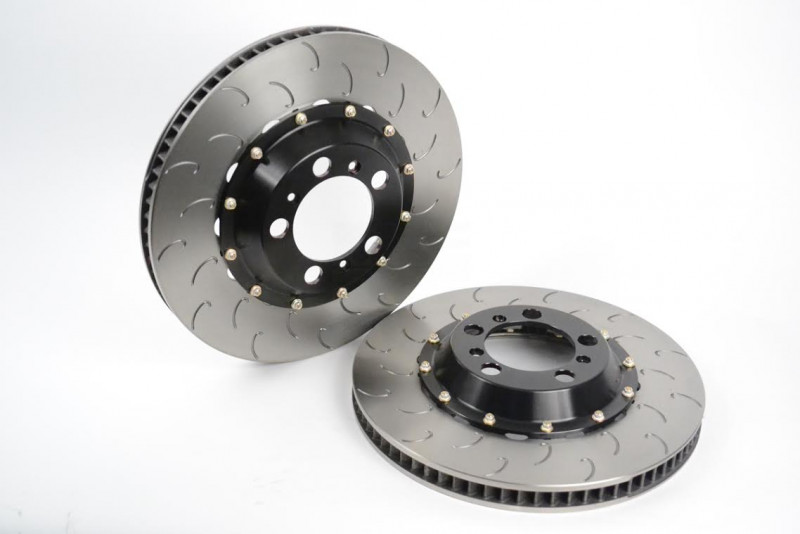
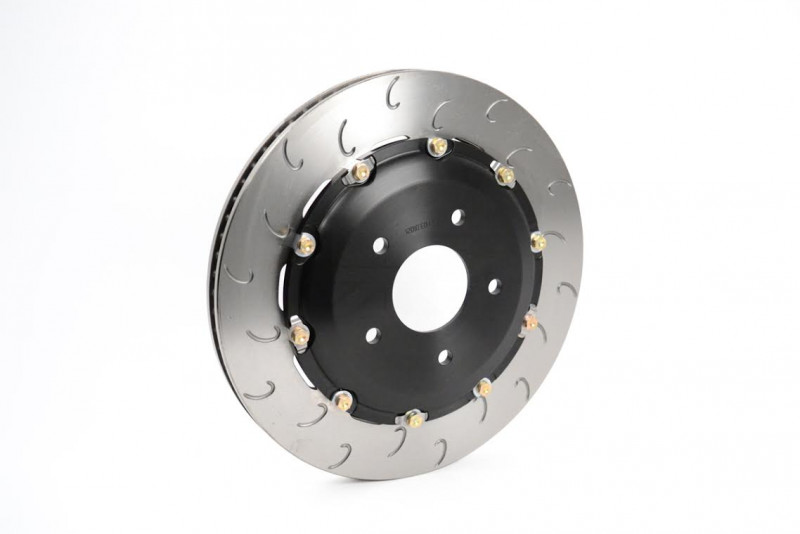
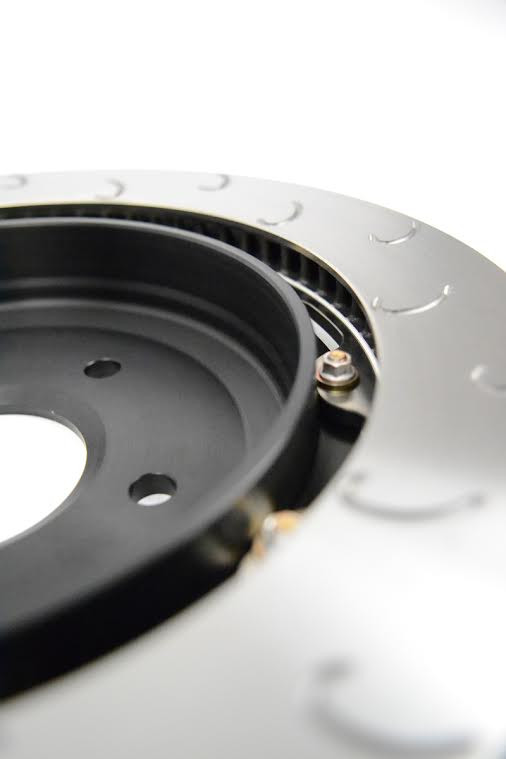
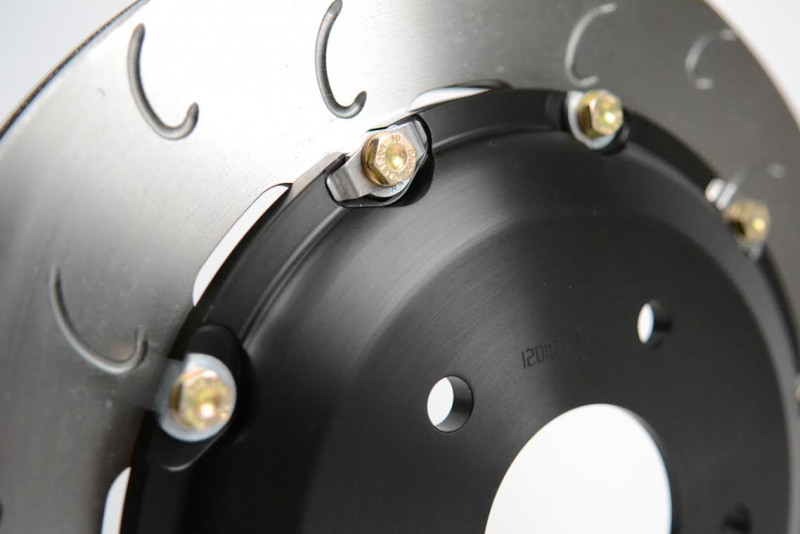
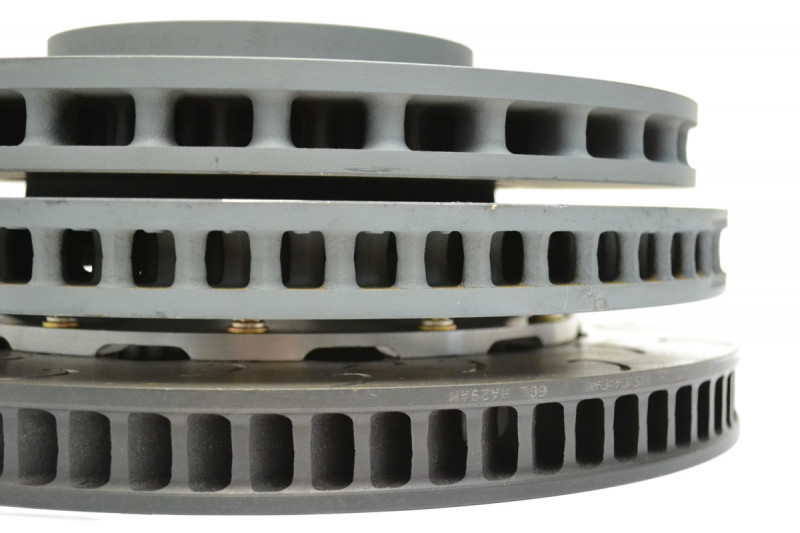
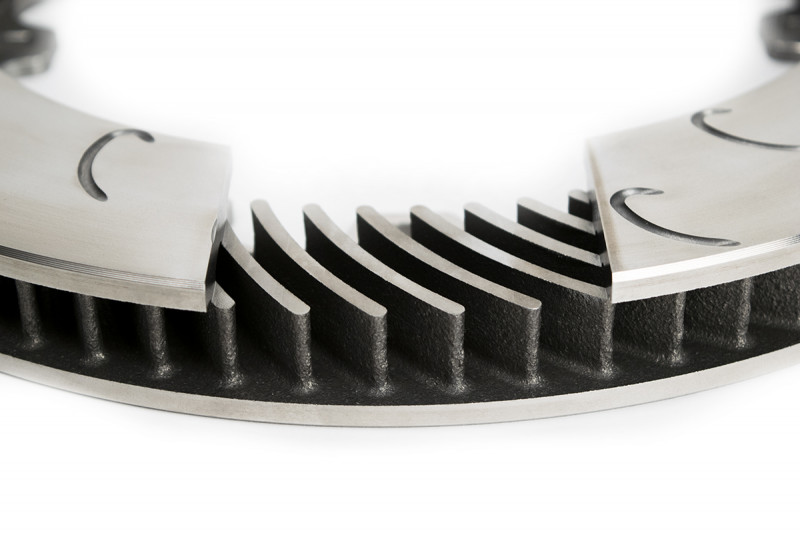
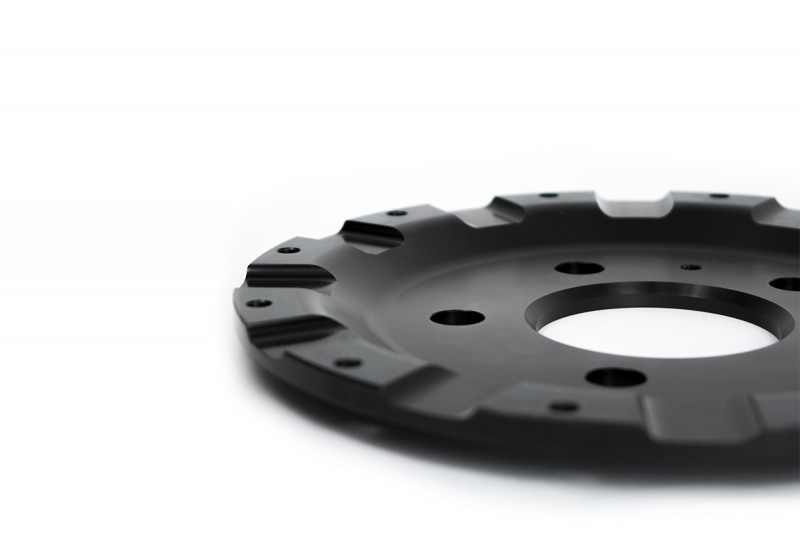
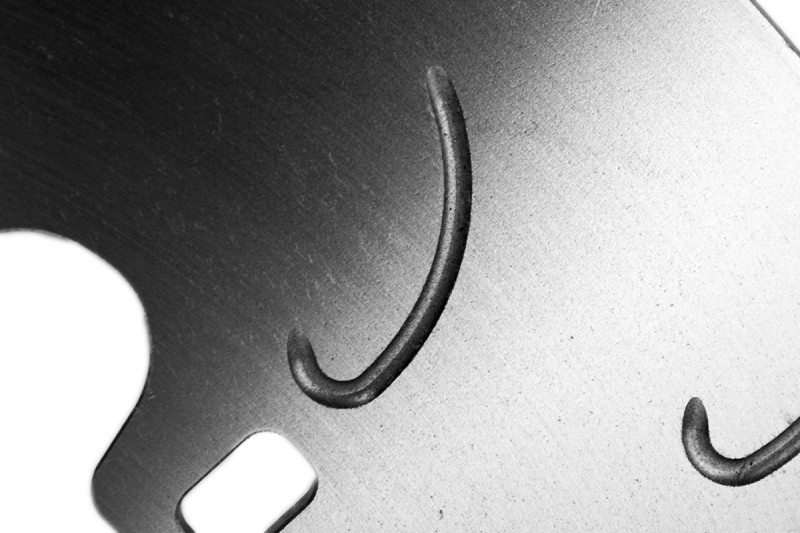
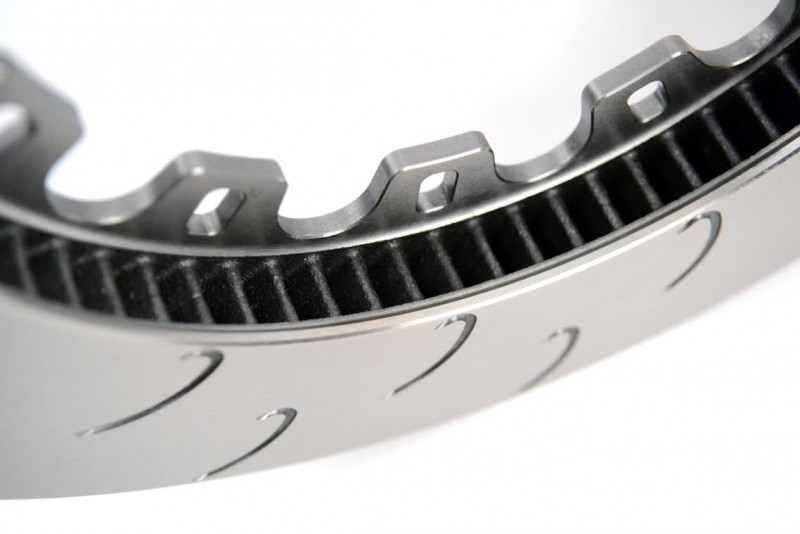

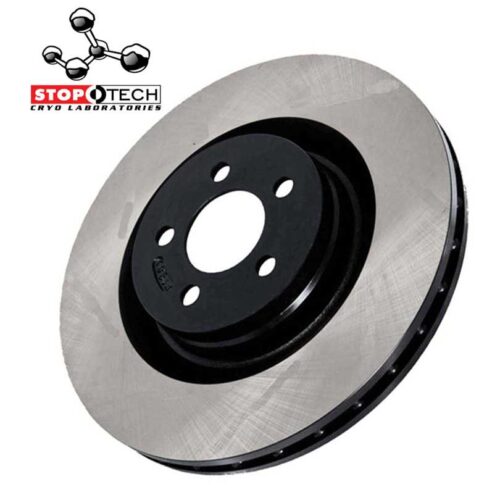
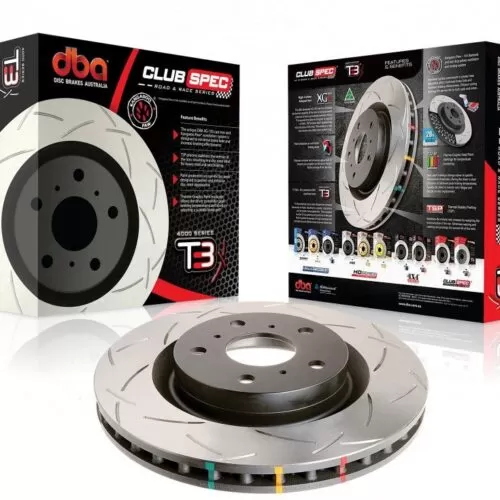

Reviews
There are no reviews yet.